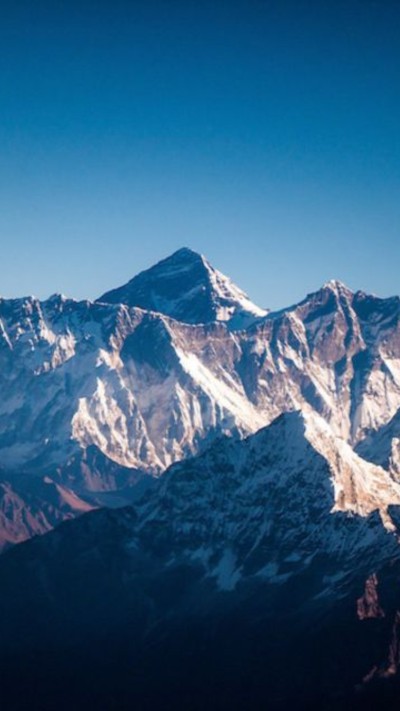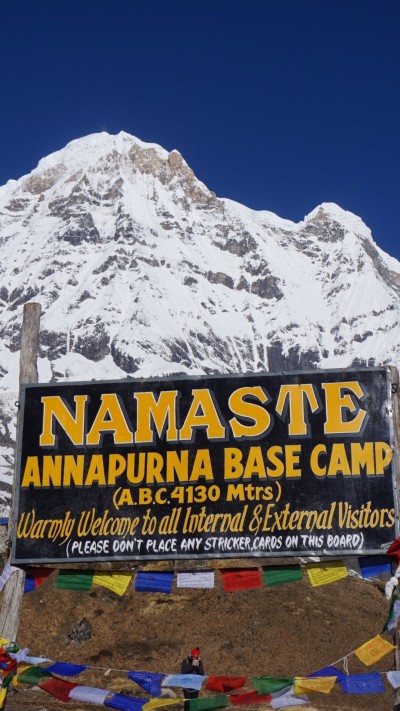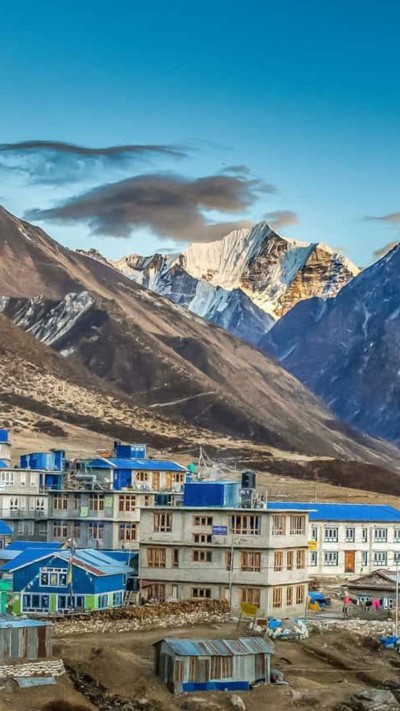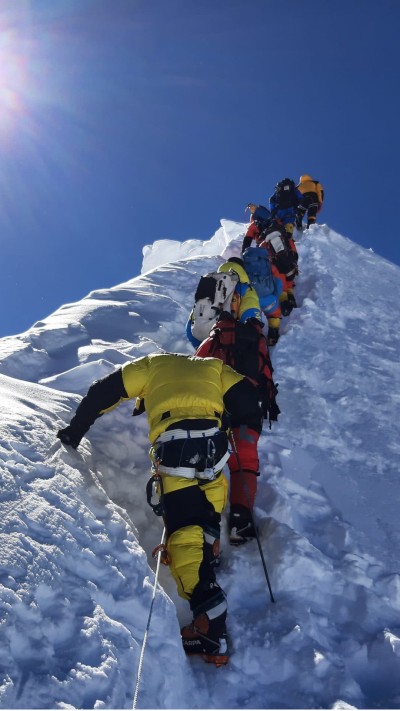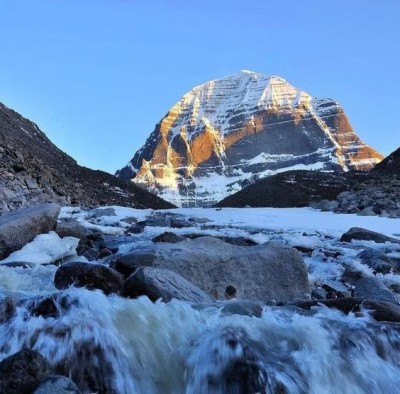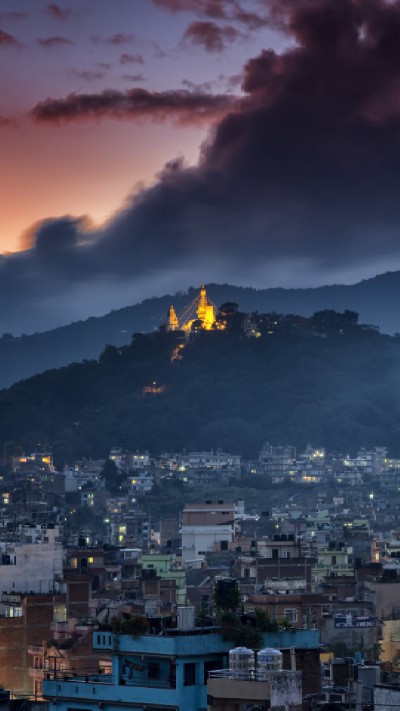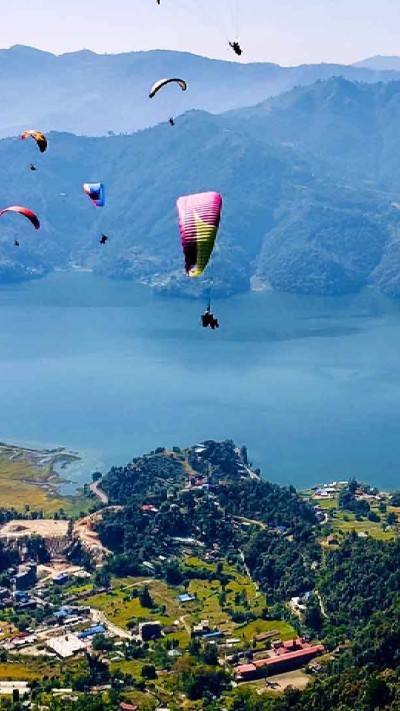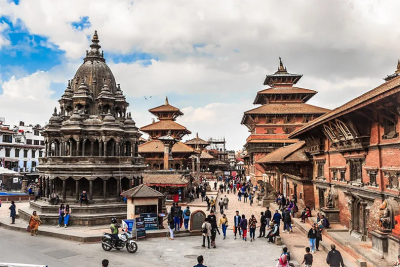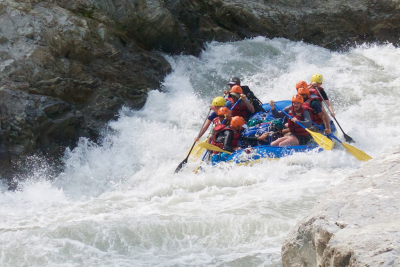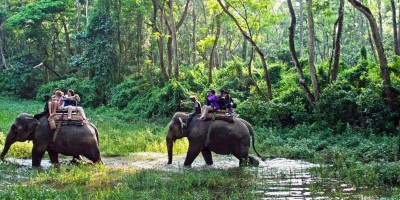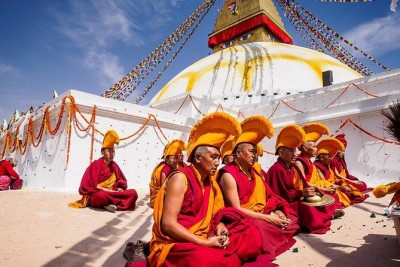About expeditions in Nepal
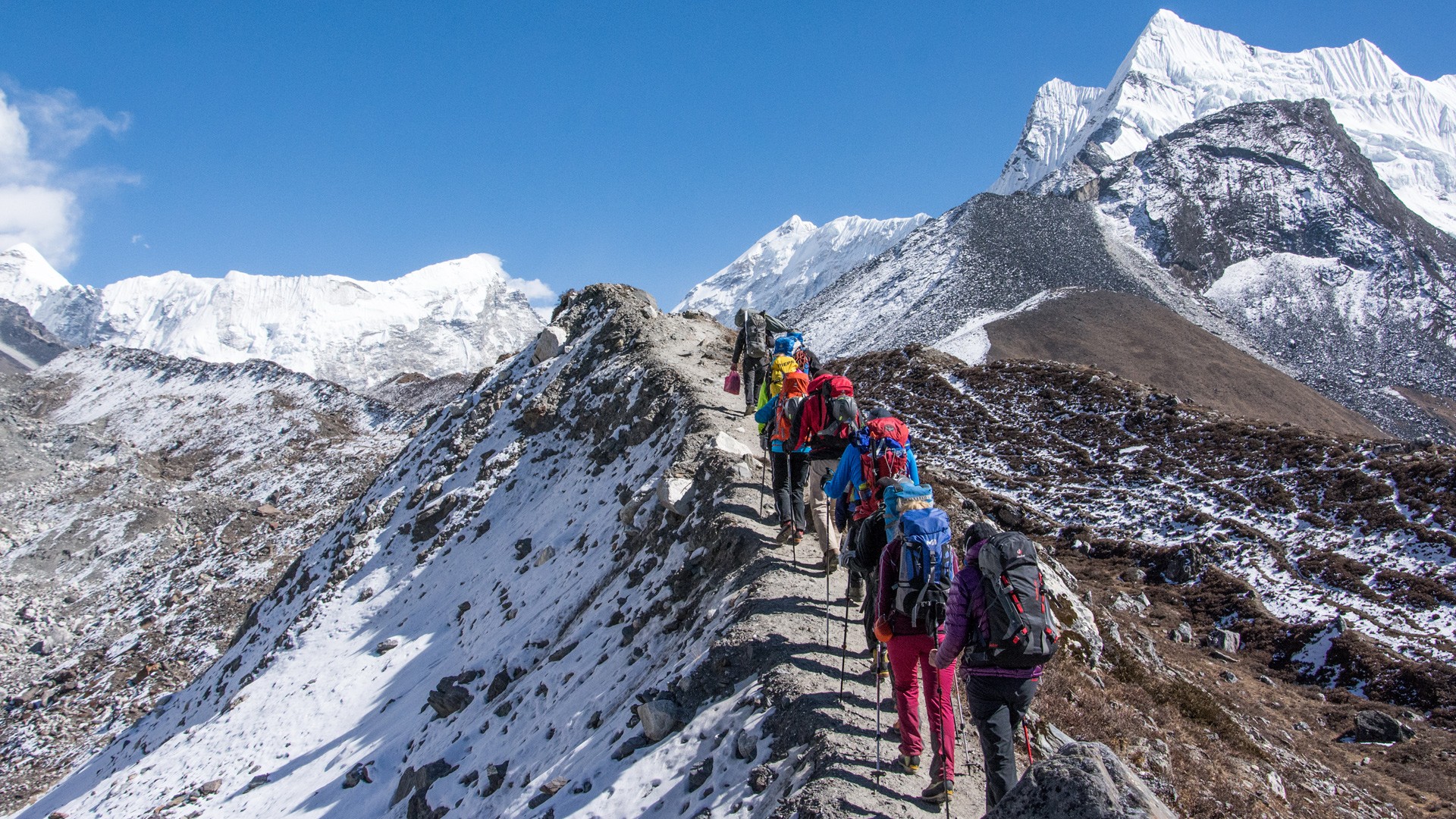
Overview
Nepal with 1310 identified Himalayan peaks over 6000m including 8 out of 14 highest peaks in the world is unquestionably a premier mountaineering and climbing destination for thousands of climbers and mountaineers testing their skills and endurance and fulfilling their desire to summit a Himalayan peak and marvel at the world from its rooftop. Currently, there are 326 peaks open for climbing and mountaineering in Nepal.
Mountaineering expedition in Nepal has been a popular adventure sport all over the globe since Sir Edmund Hillary and Tenzing Norgay climbed Mount Everest in May 1953. The appeal of the Himalayas is irresistible to mountaineers, as the Himalayas are the highest and most difficult mountain range on earth. Their magnificent elegance, vastness, wonder, magic, and excitement will still appeal to those who are willing to move into this glorious area of the Himalayas.
The number of excited mountaineers who flock to the Himalayas is rising every year. If it's merely ascending a trekking peak or a complete mountaineering adventure on a 7000 or 8000 meter high. Joining the Himalayan expedition party has been a fantasy and the ultimate aim for many explorers and mountaineers.
Mountaineering expedition in Nepal has been a popular adventure sport all over the globe since Sir Edmund Hillary and Tenzing Norgay climbed Mount Everest in May 1953. The appeal of the Himalayas is irresistible to mountaineers, as the Himalayas are the highest and most difficult mountain range on earth. Their magnificent elegance, vastness, wonder, magic, and excitement will still appeal to those who are willing to move into this glorious area of the Himalayas.
The number of excited mountaineers who flock to the Himalayas is rising every year. If it's merely ascending a trekking peak or a complete mountaineering adventure on a 7000 or 8000 meter high. Joining the Himalayan expedition party has been a fantasy and the ultimate aim for many explorers and mountaineers.
Guests must therefore provide a minimum of expertise, training, and understanding of basic mountain climbing, scrambling steep snow and rock, safety methods, crevice rescue, and the capacity to understand the danger of possibly unsafe snow levels, landslide, and clinical indicators of exhaustion, altitude sickness, cold and hypothermia and quickly shifting weather conditions.
Mountaineering preparation is a continual and never-ending process; it is a way of life and involves continual practice, and mountaineering intuition must become second nature. A minor error or a lapse in focus may be fatal. The reward, though, is a stunning vision and an incredible impression of the lifetime achievement of being at the top of the summit.
Peaks opened for climbing
Mountains are part of natural resources, and most countries, including those rich in mineral resources, derive fees and revenue from special mountain climbing permits such as Denali in the USA or Aconcagua in Argentina. Nepalese government fees are an important part of export earnings.
New policies for climbing and mountaineering within Nepal have been developed by the Government of Nepal. Around the same time, new peaks were available for climbing. There are actually 326 mountain peaks available for hiking, including 20 royalty-free peaks. Climbing peaks have been classified into three categories: A, B, and C.
Category A:
There are 22 peaks open to Nepalese expeditions or joint Nepalese-Foreign expeditions consisting of at least 3 Nepalese members;
Category B:
Peaks open to Foreign expeditions only after they have been climbed by Nepalese or joint Nepalese-Foreign expedition;
Category C:
Unrestricted peaks open to any expedition.
22 Peaks opened for Nepalese expeditions or join Nepalese and foreign Expeditions consisting at least three Nepalese members
|
Number |
Name of the Peak and Mountain |
Altitude in Meter |
Administrative Zone |
|
1. |
Hrikuti |
6364M |
Dhaulagiri |
|
2. |
Bhemdang Ri |
6150M |
Bagmati |
|
3. |
Bhairab Takura (Madiya Peak) |
6799M |
Bagmati |
|
4. |
Chamar |
7187M |
Gandaki |
|
5. |
Changla |
6563M |
Karnali |
|
6. |
Dorje Lhakpa |
6966M |
Bagmati |
|
7. |
Ganchenpo |
6387 M |
Bagmati |
|
8. |
Gandharava |
6248 M |
Gandaki |
|
9. |
Gurja Himal |
7193 M |
Dhaulagiri |
|
10. |
Ri Gurkarpa |
6891 M |
Bagmati |
|
11. |
Kang Gyachung |
7952M |
Sagarmatha |
|
12. |
Gyalzen Peak |
6151 M |
Bagmati |
|
13. |
Jongsong Peak |
7483 M |
Mechi |
|
14. |
Karyolung |
6511 M |
Sagarmatha |
|
15. |
Kirat Chuli(Tent Peak) |
7365 M |
Bagmati |
|
16. |
Langtang Ri |
7205 M |
Bagmati |
|
17. |
Leonpa Gang (Big White Peak) |
6979 M |
Bagmati |
|
18. |
Nala Kankar |
6062 M |
Karnali |
|
19. |
Nepal Peak |
6910 M |
Mechi |
|
20. |
Ohmi Kanga |
6829 M |
Mechi |
|
21. |
Phurbi Chyachu |
6631 M |
Bagmati |
|
22. |
Urknmang |
6151 M |
Bagmati |
B. Peaks opened to foreign expeditions only when they have been climbed by Nepalese and foreign joint expedition
|
Number |
Name of the Peak and Mountain |
Altitude in Meter |
Administrative Zone |
|
1. |
Bobaye |
6808 M |
Mahakali |
|
2. |
Ganesh (Yangra) |
7429 M |
Bagmati |
|
3. |
Jethi Bahurani |
6850 M |
Mahakali |
|
4. |
Khangsar Kang |
7485 M |
Gandaki |
C. Peaks opened for foreign expeditions
|
Number |
Name of the Peak and Mountain |
Altitude in Meter |
Administrative Zone |
|
1. |
Ama Dablam |
6812M |
Sagarmatha |
|
2. |
Annapurna I |
8091M |
Gandaki |
|
3. |
Annapurna II |
7937 M |
Gandaki |
|
4. |
Annapurna III |
7555 M |
Gandaki |
|
5. |
Annapurna IV |
7525 M |
Gandaki |
|
6. |
Annapurna South |
7219 M |
Gandaki |
|
7. |
Api Himal |
7132 M |
Mahakali |
|
8. |
Api West |
7100 M |
Darchula |
|
9. |
Barun Tse |
7129 M |
Kashi |
|
10. |
Baudha |
6672 M |
Gankdaki |
|
11. |
Chamlang |
7319 M |
Sagarmatha Barun |
|
12. |
Cheo Himal |
6820 M |
Gandaki |
|
13. |
Chobuje |
6685 M |
Janakpur |
|
14. |
Cholatse |
6440 M |
Sagarmatha |
|
15. |
Cho-oyu |
8201 M |
Sagarmatha |
|
16. |
Cho polu |
6711 M |
Sagarmatha |
|
17. |
Churen |
7371 M |
Dhaulagiri |
|
18. |
Dhampus |
6012 M |
Dhaulagiri |
|
19. |
Dhaulagiri I |
8167 M |
Dhaulagiri |
|
20. |
Dhaulagiri II |
7751 M |
Dhaulagari |
|
21. |
Dhaulagiri III |
7715M |
Dhaulagiri |
|
22. |
Dhaulagiri IV |
7661 M |
Dhaulagiri |
|
23. |
Drangang Ri |
6801 M |
Janakpur |
|
24. |
Dhaulagiri V |
7618 M |
Dhaulagiri |
|
25. |
Dhaulagiri IV |
7268 M |
Dhaulagiri |
|
26. |
Fimkot West |
6645 M |
Bajhang |
|
27. |
Fimkot |
6697 M |
Bajhang Humla |
|
28. |
Ganesh IV (Pabil) |
7052 M |
Bagmati |
|
29. |
Ganesh II |
7111 M |
Bagmati |
|
30. |
Ganesh III (Salasungo) |
7110 M |
Bagmati |
|
31. |
Ganesh V |
6986 M |
Bagmati |
|
32. |
Gangapurna |
7455 M |
Bagmati |
|
33. |
Gauri Shanker |
7134 M |
Janakpur |
|
34. |
Gimigela Chuli |
7350 M |
Mechi |
|
35. |
Gyajikang |
7038 M |
Gandaki |
|
36. |
Himachuli E |
7893 M |
Gandaki |
|
37. |
Himchuli N. |
7371 M |
Gandaki |
|
38. |
Himchuli West |
7540 M |
Gandaki |
|
39. |
Himlung Himal |
7126 M |
Gandaki |
|
40. |
Hongde |
6556 M |
Karnali |
|
41. |
Jagdula Peak |
5763 M |
Karnali |
|
42. |
Kumbhakarna (Jannu) |
7710 M |
Mechi |
|
43. |
Kangbachen |
7903M |
Mechi |
|
44. |
Kagmara |
5960 M |
Karnali |
|
45. |
Kande Hiunchuli |
6627 M |
Karnali |
|
46. |
Kanchenjunga (Main) |
8586 M |
Mechi |
|
47. |
Kanchenjunga |
8476 M |
Mechi |
|
48. |
Kanchenjunga(South) |
8476 M |
Mechi |
|
49. |
Kang Guru |
6981 M |
Gandaki |
|
50. |
Kangtega(Kantega) |
6779 M |
Sagarmatha |
|
51. |
Kanjeralwa |
6612 M |
Karnali |
|
52. |
Kanijiroba (Main Peak) |
6838 M |
Karnali |
|
53. |
Khatang |
6782 M |
Janakpur |
|
54. |
Lamjung Himal |
6918 M |
Gandaki |
|
55. |
Langsisa Ri |
6427 M |
Bagmati |
|
56. |
Langtang Lirung |
7234 M |
Bagmati |
|
57. |
Lhotse |
8516 M |
Sagarmatha |
|
58. |
Lhotse Shar |
8400 M |
Sagarmatha |
|
59. |
Lobuje West |
6145 M |
Sagarmatha |
|
60. |
Lemgpa Peak |
6954 M |
Mechi |
|
61. |
Makalu I |
8463 M |
Koshi |
|
62. |
Makalu II (Kangchugtse) |
7678 M |
Koshi |
|
63. |
Manapathi |
6380 M |
Dhaulagiri |
|
64. |
Manaslu |
8163 M |
Gandaki |
|
65. |
Manaslu North |
7157 M |
Gandaki |
|
66. |
Nampa |
6755 M |
Mahakali |
|
67. |
Ngojumbakang |
7743 M |
Sagarmatha |
|
68. |
Nilgiri Central |
6940 M |
Dhaulagiri |
|
69. |
Nilgiri North |
7061 M |
Dhaulagiri |
|
70. |
Nilgiri South |
6839 M |
Dhaulagiri |
|
71. |
Numbur |
6957 M |
Sagarmatha |
|
72. |
Nuptse |
7855 M |
Sagarmatha |
|
73. |
Ngadi Chuli (Peak 29 Dakura) |
7871 M |
Gandaki |
|
74. |
Nampa South |
6580 M |
Darchula/Bajhang |
|
75. |
Patrasi |
6450 M |
6450 Karnali |
|
76. |
Pumori |
7161M |
Sagarmatha |
|
77. |
Putha Hiunchuli |
7246 M |
Dhaulagiri |
|
78. |
Pathivara Chuli |
7125 M |
Mechi |
|
79. |
Pasang Lhamuh (Chuli Jasamba) |
7351 M |
Sagarmatha |
|
80. |
Raksha Urai |
6593 M |
Bajhang |
|
81. |
Saipal |
7031 M |
Mahakali |
|
82. |
Shanti Shikhar |
7591 M |
Sagarmatha/Khumbu |
|
83. |
Shartse |
7459 M |
Sagarmatha |
|
84. |
Sisne |
5849 M |
Karnali |
|
85. |
Sita Chuchura |
6611 M |
Dhaulagiri |
|
86. |
Saipal East |
6882 M |
Bajhang |
|
87. |
Surma-Sarovar North |
6523 M |
Bajhang |
|
88. |
Sagarmatha |
8848 M |
Sagarmatha |
|
89. |
Shey Shikhar |
6139 M |
Karnali |
|
90. |
Tawache |
6501 M |
Sagarmatha |
|
91. |
Thamserku |
6623 M |
Sagarmatha |
|
92. |
Tilicho peak |
7134 M |
Gandaki |
|
93. |
Tukuche Peak |
6920 M |
Dhaulagir |
|
94. |
Tripura Hiunchuli |
6563 M |
Karnali |
|
95. |
Tso Karpo |
6518 M |
Dolpa |
|
96. |
Tarke Kang |
7193 M |
Gandaki |
|
97. |
Varaha Shikhar (Fang) |
7647 M |
Dhaulagiri |
|
98. |
Yalung Kang |
8505 M |
Mechi |
No Royalty Peaks
The Nepalese Government of Nepal has agreed to withhold royalties for the growth of such peaks. The Government has recently declared a partial and absolute exemption from royalties on the 60 mountain peaks of the Kingdom of Nepal. New announcements are made with a view to promoting the trekking and mountaineering field in conjunction with the destination Nepal Year 2002-003, the Golden Jubilee celebration of the successful ascent of Mount Everest, and the International Mountaineering Tourism Year 2011.
100% Royalty-Free Peaks and Mountain list in Nepal
|
Number |
Name of the Peak and Mountain |
Altitude in Meter |
District |
Zone |
|
1. |
Fimkof Himal |
6697M |
Bajhang |
Seti |
|
2. |
Fimkof West Peak |
6645M |
Bajhang |
Seti |
|
3. |
Radsha Urai Peak |
6593M |
Bajhang |
Seti |
|
4. |
Surma-Sarovar, North Peak |
6523M |
Bajhang |
Seti |
|
5. |
Api Himal |
7132M |
Darchula |
Mahakali |
|
6. |
Api west Himal |
7100M |
Darchula |
Mahakali |
|
7. |
Saipal Himal |
7031M |
Darchula |
Mahakali |
|
8. |
Saipal, East Himal |
6882M |
Darchula |
Mahakali |
|
9. |
Jethi Bahurani Himal |
6850M |
Darchula |
Mahakali |
|
10. |
Bobaye Peak |
6808M |
Darchula |
Mahakali |
|
11. |
Nampa Peak |
6755M |
Darchula |
Mahakali |
|
12. |
Nampa, South Peak |
6580M |
Darchula |
Mahakali |
|
13. |
Mt.Rokapi |
5467M |
Bajhang |
Seti |
|
14. |
Mt. Korko |
6053M |
Bajhang |
Seti |
|
15. |
Mt. Roma |
5407M |
Bajhang |
Seti |
|
16. |
Mt. Dhaulagiri |
6632M |
Bajhang |
Seti |
|
17. |
Mt. Khiuri Khala |
5806M |
Bajhang |
Seti |
|
18. |
Mt. Nampa II |
6700M |
Bajhang?Darchula |
Mahakali/Seti |
|
19. |
Mt. Nampa III |
6618M |
Bajhang/Darchula |
Mahakali/Seti |
|
20. |
Mt. Yokopahar-(Nampa 7) |
6401M |
Bajhang/Darchula |
Mahakali/Seti |
75% Royalty-Free Mountains in Nepal:
|
Number |
Name of the Peak and Mountain |
Altitude in Meter |
District |
Zone |
|
1. |
Bhemdang Ri |
6150M |
Rasuwa |
Bagmati |
|
2. |
Leonpo Gang (Big White Peak) |
6645M |
Rasuwa |
Bagmati |
|
3. |
Gindharva |
6248M |
Kaski |
Gandaki |
|
4. |
Gyalzen Peak |
6151M |
Rasuwa |
Bagmati |
|
5. |
Bhairab Takura (Madiya Peak) |
6799M |
Rasuwa |
Bagmati |
|
6. |
Nepal Peak |
6910M |
Taplejung |
Mechi |
|
7. |
Phurbi Chyachu |
6631M |
Rasuwa |
Bagmati |
|
8. |
Ohmi Kangn |
6829M |
Rasuwa |
Bagmati |
|
9. |
Kirat Chuli (Tent Peak) |
7365M |
Taplejung |
Mechi |
|
10. |
Urknmang |
6151M |
Taplejung |
Mechi |
|
11. |
Kang Sar Kang |
7485M |
Kaski |
Gandaki |
Expedition Permit Fees
Government has recently restructured Royalties of Mountain Climbing permits in Nepal. The changed royalty structure has been implemented since the 1st of January 2015. The objectives of restructuring the royalty fees are in order to stimulate climbing tourism to make competitive with neighboring counties, to promote mountain climbing in remote locations, and to encourage mountaineering/climbing all year round.
The features of recently changed royalty fees are:
· The permit fees were discounted to 50% for autumn expeditions than spring and to 25% for winter and summer expeditions.
· Maximum number of expedition members allowed per expedition was increased from 12 to 15.
· The individual or small size group is more beneficial with the changed structure
· Climbing royalty was waved for a period of 5 years for peaks located in mid and far western regions.
· Incremental royalty system was implemented, whereby the royalty fee is proportional to the number of expedition members replacing the previous flat fee per expedition.
Climbing Royalty for Foreigner Climbers above 8000 meters in USD.
|
S.N |
Name of The Peak |
Spring |
Autumn |
Winter/Summer |
|
1 |
Mount Everest (8848 M) Normal route. |
$ 11000 |
$ 5500 |
$ 2750 |
|
2 |
Mount Everest (8848 M) Other Route |
$ 11000 |
$ 5000 |
$ 2500 |
|
3 |
Kanchenjunga (8586M) |
$ 1800 |
$ 900 |
$ 450 |
|
4 |
Lhotse (8516M) |
$ 1800 |
$ 900 |
$ 450 |
|
5 |
Makalu (8463 M) |
$ 1800 |
$ 900 |
$ 450 |
|
6 |
ChoYou (8201M) |
$ 1800 |
$ 900 |
$ 450 |
|
7 |
Dhaulagiri (8167M) |
$ 1800 |
$ 900 |
$ 450 |
|
8 |
Manalsu (8163M) |
$ 1800 |
$ 900 |
$ 450 |
|
9 |
Annapurna (8091M) |
$ 1800 |
$ 900 |
$ 450 |
|
10 |
Shisapangma (8013M) |
$ 1800 |
$ 900 |
$ 450 |
Climbing Royalty for Foreigner Climbers 7501meter to 7999 Meter in USD.
|
S.N |
Name of the Peak |
Spring |
Autumn |
Winter/Summer |
|
1 |
Kang Gyachung (7952 M) |
$600 |
$300 |
$150 |
|
2 |
Annapurna II (7937 M) |
$600 |
$300 |
$150 |
|
3 |
Kangbachen (7903 M) |
$600 |
$300 |
$150 |
|
4 |
Himachali E (7893 M) |
$600 |
$300 |
$150 |
|
5 |
Ngadi Chuli (Peak 29 Dakura) (7871 M) |
$600 |
$300 |
$150 |
|
6 |
Nuptse (7855 M) |
$600 |
$300 |
$150 |
|
7 |
Dhaulagiri II (7751 M) |
$600 |
$300 |
$150 |
|
8 |
Dhaulagiri III (7715 M) |
$600 |
$300 |
$150 |
|
9 |
Kumbhakarna (Jannu) (7710) |
$600 |
$300 |
$150 |
|
10 |
Varaha Shikhar (Fang) (7674 M) |
$600 |
$300 |
$150 |
|
11 |
Dhaulagiri IV (7661 M) |
$600 |
$300 |
$150 |
|
12 |
Dhaulagiri V (7618 M) |
$600 |
$300 |
$150 |
|
13 |
Annapurna III (7555 M) |
$600 |
$300 |
$150 |
|
14 |
Himchuli West (7540 M) |
$600 |
$300 |
$150 |
|
15 |
Annapurna IV (7525M) |
$600 |
$300 |
$150 |
Climbing Royalty for Foreigner Climbers 7000 meter to 7500 Meter in USD.
|
S.N |
Name of The Peak |
Spring |
Autumn |
Winter/Summer |
|
1 |
Khang Sar Kang (7485 M) |
$500 |
$250 |
$125 |
|
2 |
Jongsang Peak (7483 M) |
$500 |
$250 |
$125 |
|
3 |
Shartse (7459 M) |
$500 |
$250 |
$125 |
|
4 |
Mount Gangapurna (7455 M) |
$500 |
$250 |
$125 |
|
5 |
Gangapurna(7455M) |
$500 |
$250 |
$125 |
|
6 |
Himchuli N (7371 M) |
$500 |
$250 |
$125 |
|
7 |
Churen (7371 M) |
$500 |
$250 |
$125 |
|
8 |
Kirat Chuli(Tent Peak) (7365 M) |
$500 |
$250 |
$125 |
|
9 |
Gimigela Chuli (7350 M) |
$500 |
$250 |
$125 |
|
10 |
Pasang Lhamuh (Chuli Jasamba)(7315M) |
$500 |
$250 |
$125 |
|
11 |
Chamlang (7319 M) |
$500 |
$250 |
$125 |
|
12 |
Dhaulagiri IV (7268 M) |
$500 |
$250 |
$125 |
|
13 |
Langtang Lirung (7234 M) |
$500 |
$250 |
$125 |
|
14 |
Putha Hiunchuli (7246 M) |
$500 |
$250 |
$125 |
|
15 |
Langtang Ri (7205 M) |
$500 |
$250 |
$125 |
|
16 |
Gurja Himal (7193 M) |
$500 |
$250 |
$125 |
|
17 |
Tarke Kang (7193 M) |
$500 |
$250 |
$125 |
|
18 |
Chamar (7187 M) |
$500 |
$250 |
$125 |
|
19 |
Manaslu North (7157 M) |
$500 |
$250 |
$125 |
|
20 |
Pumori (7161 M) |
$500 |
$250 |
$125 |
|
21 |
Mount Tilicho (7134 M) |
$500 |
$250 |
$125 |
|
22 |
Gauri Shanker (7134 M) |
$500 |
$250 |
$125 |
|
23 |
Api Himal (7132 M) |
$500 |
$250 |
$125 |
|
24 |
Barun Tse (7129 M) |
$500 |
$250 |
$125 |
|
25 |
Mount Baruntse (7129 M) |
$500 |
$250 |
$125 |
|
26 |
Pathivara Chuli (7125 M) |
$500 |
$250 |
$125 |
|
27 |
Himlung Himal (7126 M) |
$500 |
$250 |
$125 |
|
28 |
Ganesh II (7111 M) |
$500 |
$250 |
$125 |
|
29 |
Ganesh III (Salasungo)(7110 M) |
$500 |
$250 |
$125 |
|
30 |
Api West (7100 M) |
$500 |
$250 |
$125 |
|
31 |
Nilgiri North (7061 M) |
$500 |
$250 |
$125 |
|
32 |
Ganesh IV (Pabil) (7052 M) |
$500 |
$250 |
$125 |
|
33 |
Gyajikang (7038 M) |
$500 |
$250 |
$125 |
|
34 |
Saipal (7031 M) |
$500 |
$250 |
$125 |
|
35 |
Saipal East (7031 M) |
$500 |
$250 |
$125 |
Climbing Royalty for Foreigner Climbers 6501 meter to 6999 in USD.
|
S.N |
Name of The Peak |
Spring |
Autumn |
Winter/Summer |
|
1 |
Ganesh V (6986 M) |
$400 |
$200 |
$100 |
|
2 |
Kang Guru (6981 M) |
$400 |
$200 |
$100 |
|
3 |
Leonpa Gang (Big White Peak)(6979M) |
$400 |
$200 |
$100 |
|
4 |
Dorje Lhakpa (6966 M) |
$400 |
$200 |
$100 |
|
5 |
Numbur (6957 M) |
$400 |
$200 |
$100 |
|
6 |
Lemgpa Peak (6954 M) |
$400 |
$200 |
$100 |
|
7 |
Tukuche Peak (6920 M) |
$400 |
$200 |
$100 |
|
8 |
Lamjung Himal (6918 M) |
$400 |
$200 |
$100 |
|
9 |
Ri Gurkarpa (6891M) |
$400 |
$200 |
$100 |
|
10 |
Jethi Bahurani (6850 M) |
$400 |
$200 |
$100 |
|
11 |
Nilgiri South (6839 M) |
$400 |
$200 |
$100 |
|
12 |
Ohmi Kanga (6829 M) |
$400 |
$200 |
$100 |
|
13 |
Kanijiroba (Main Peak) (6828 M) |
$400 |
$200 |
$100 |
|
14 |
Cheo Himal (6820 m) |
$400 |
$200 |
$100 |
|
15 |
Bobaye(6808 M) |
$400 |
$200 |
$100 |
|
16 |
Drangang Ri (6801M) |
$400 |
$200 |
$100 |
|
17 |
Bhairab Takura (Madiya Peak) (6799 M) |
$400 |
$200 |
$100 |
|
18 |
Khatang (6782 M) |
$400 |
$200 |
$100 |
|
19 |
Kangtega(Kantega) (6779 M) |
$400 |
$200 |
$100 |
|
20 |
Nampa (6755 M) |
$400 |
$200 |
$100 |
|
21 |
Cho polu (6711 M) |
$400 |
$200 |
$100 |
|
22 |
Fimkot (6697 M) |
$400 |
$200 |
$100 |
|
23 |
Chobuje (6685 M) |
$400 |
$200 |
$100 |
|
24 |
Baudha (6672 m) |
$400 |
$200 |
$100 |
|
25 |
Fimkot West (6645 M) |
$400 |
$200 |
$100 |
|
26 |
Phurbi Chyachu (6631 M) |
$400 |
$200 |
$100 |
|
27 |
Kande Hiunchuli (6627 M) |
$400 |
$200 |
$100 |
|
28 |
Thamserku (6623 M) |
$400 |
$200 |
$100 |
|
29 |
Kanjeralwa (6612 M) |
$400 |
$200 |
$100 |
|
30 |
Sita Chuchura (6611 M) |
$400 |
$200 |
$100 |
|
31 |
Raksha Urai (6593 M) |
$400 |
$200 |
$100 |
|
32 |
Nampa South (6580 M) |
$400 |
$200 |
$100 |
|
33 |
Changla (6563M) |
$400 |
$200 |
$100 |
|
34 |
Tripura Hiunchuli (6563 M) |
$400 |
$200 |
$100 |
|
35 |
Hongde (6556 M) |
$400 |
$200 |
$100 |
|
36 |
Surma-Sarovar North (6523 M) |
$400 |
$200 |
$100 |
|
37 |
Tso Karpo (6518 M) |
$400 |
$200 |
$100 |
|
38 |
Karyolung (6511M) |
$400 |
$200 |
$100 |
|
39 |
Tawache (6501 M) |
$400 |
$200 |
$100 |
Climbing Royalty for Foreigner Climbers Less than 6500 Meters in USD.
|
S.N |
Name of The Peak |
Spring |
Autumn |
Winter/Summer |
|
1 |
Less Than 6500 Meter |
$250 |
$125 |
$70 |
Climbing Permit for Amadablam Expedition for Foreigner Climbers in USD.
|
S.N |
Mount Amadablam (6812 M) |
$400 |
$400 |
$200 |
Note: The provision of Royalty for foreign climbers has been effected from 1 January 2015 (B.S. 2071/09/17)
Rules of Mountaineering
In exercise of the powers conferred by the Government of Nepal, Nepal Mountaineering Association has made the following rules to be observed for the climbing of the peaks of Nepal Himalaya listed in Appendix 1'. These rules will come into force at once.
Definition:
- Where applicable definitions for these rules will be the same as those for the Government of Nepal Mountaineering Expedition Regulations 1979 and its First Amendment 1984.
Permission:
- Any person or mountaineering team desirous of climbing the peak listed in Appendix 1' must receive permission from Nepal Mountaineering Association. Application to climb the peak must be made in the form as prescribed in Appendix 2'. Permission to climb the peaks will be granted for a period of one month only. Permission may be extended, if necessary, for another period of two weeks. The period of permission granted relates to time spent climbing above the base camp. The trek to and from the base camp is not included. Application for a climbing permit may be made at any time by the concerned mountaineering team. The permit will be granted on a first come first serve basis. The right to give permission to another party for climbing the same peak during the same period is reserved by the Nepal Mountaineering Association. Nepal Mountaineering Association will recommend to Immigration Office of Government of Nepal for obtaining trekking permit of the area for the team members.
Payment of fee:
- The climbing fee structure of NMA 18 Trekking Peaks listed in Appendix "1" is as follows:
|
SN. |
Name of the Peaks |
Altitude in Meter |
Himalayan Range |
District |
Caravan Rute |
|
1. |
Shigu Chuli(Fluted peak) |
6501 M |
Annapurna Himal |
Gandak |
ktm-Pkr-Ghorepani-Tadhaani |
|
2. |
Mera Peak |
6654 M |
Khumbu Himal |
Sagarmatha |
Ktm-jiri-shivalaya- junbasi-nunthala-Kharikhola-poyanbung-chadrabu- kothe-thangna-khar |
|
3. |
Kusum Kangru |
6367 M |
Khumbu Himal |
Sagarmatha |
ktm-lukla-namche-Thame-Khumjung-B.C. |
|
4. |
Kwandge |
6011 M |
Khumbu Himal |
Sagarmatha |
Ktm-Lukla-Merala-Randimng-Hunde-B.C. |
|
5. |
Chulu West |
6419 M |
Manang |
Gandaki |
Ktm-Besisahar-Ngadi-Jagat-Dharapani |
|
6. |
Imja-tse(Island Peak) |
6160 M |
Khumbu Himal |
Sagarmatha |
ktm-Lukla-Namche-Tyangboche-Pangpoche-Dingboche-chhukang-B.C. |
|
7. |
Pharchamo |
6187 M |
Rolwaling Himal |
Janakpur |
Ktm-Dolkha-siguti-jagat-simigaon-Chagebukharka-Beding-Na-B.C. |
|
8. |
Lobuje |
6119 M |
Khumbu Himal |
Sagarmatha |
Ktm-Lukla-Namche-Thame-RermoPokhari-Gokya-dzonghla-B.C. |
|
9. |
Ramdung |
5925 M |
Rolwaling Himal |
Janakpur |
Ktm-dolkha-Siguti-GongerDoranangbu-Beding-Na-Kabung-Kydug-Kongma-Drolmaban- Tashi Lapcha-B.C. |
|
10. |
Pisang |
6091 M |
Manang |
Gandaki |
Ktm-Beshisahar-Bahundanda-Chamja-Bagarchhap-Chame- Pisang B.C. |
|
11. |
Tharpu Chuli (Tent Peak) |
5663 M |
Annapurna Himal |
|
ktm-Pokhara-Dhampus-Langdrung- Ghandrung-Chomoro-Kuldi-B.C. |
|
12. |
Khongma-tse(Mehara Peak) |
5849 M |
Khumbu Himal |
Sagarmatha |
Ktm-Lukla-Namche-Dole-Mechermo-gokyo-Dughala-B.C. |
|
13. |
Ganja-la Chuli(Naya Kanga) |
5844 M |
Langtang Himal |
Bagmati |
Ktm-Dhunche-Sysbru Goan- Lama hotel-Kyanjin Gomba-Ganjala B.C. |
|
14. |
Pokhalde |
5806 M |
Khumbu Himal |
Sagarmatha |
Ktm-Lukla-Namche-Dole-Gokya-Na-Thagna Cholapass B.C. |
|
15. |
Mardi Himal |
5587 M |
Annapurna Himal |
Gandaki |
Ktm-Pokhara-Hyangia-Dhiprang- Kharka-Mardi Basi Camp |
|
16. |
Paldor |
5896 M |
Langtang Himal |
Bagmati |
Ktm-Dhading-Ankhu khola-Rigaon-JAralang-Sertung-Krarka-somdang |
|
17. |
Hiunchuli |
6441 M |
Annapurna |
Gandaki |
Ktm-Pokhara-Chomrong-Bamboo-BC |
|
18. |
Chulu East |
6584 |
Damodar |
Gandaki |
Ktm-Beisahar-Ngadi-Jagat-Dharapani-BC |
For extending permission, an additional 25% charge of the total amount of the initial fee will be made for each extra week. The leader or climbing member of the team must collect the permit in person from Nepal Mountaineering Association. The maximum number of people in a group is 12 pax.
Refund:
- In the event of cancellation of the permission by NMA or the failure of the expedition to materialize due to some other reasons, the feels already paid will not be refunded. Every individual or party granted a climbing permit shall be accompanied by a Sirdar/Guide, who must be registered with NMA.
Functions and duties of the Sirdar/Guide:
· To assist the climbing party with the recruitment of porters and other staff, control of porters, local purchase of food, etc. And to solve any problem that may arise to the best of his ability.
· To report to the Nepal Mountaineering Association in case the party spends more than the prescribed time limit in the mountain.
· To ensure that the climbers comply with the terms of their permit.
· To ensure that the climbers (trekkers) follow the specified route.
· To ensure proper disposal of waste materials.
· To report to NMA any infringement of the climbing rules
· To report any serious incidents to the nearest police post.
Employment Conditions of the Sirdar/Guide:
· The Sirdar Guide shall be employed from the day the climbing party begins the trek until the trek is finished. The Sirdar/Guide will be provided with the following facilities
· Minimum daily allowance to be paid as per the rules of Government of Nepal, Ministry of Tourism, and Civil Aviation.
· Food and tent accommodation.
· Climbing equipment and necessary clothing if required to go above the base camp.
Insurance of the Sirdar/Guide:
· All employees going above the base camp must be insured for personal accident to the value of Rs. 200,000.00.
Nomination of representative in Kathmandu:
· Each party granted climbing permit will nominate representative in Kathmandu to act as liaison between NMA and the climbing party. The representative may be an individual or an organization registered with NMA. The nominated representative will be responsible for making necessary arrangements for the climbing party in case of accidents or any other unforeseen circumstances.
Submission of the report:
· On the conclusion of the climb and on return to Kathmandu, the party will submit a report to NMA. in the form prescribed in Appendix 4'.
Power to cancel the permit:
· NMA may cancel or withdraw the climbing permit any time with or without showing any particular reason.
Non-compliance with the regulation:
· Where any trekking party acts in contravention to the climbing permit or indulges in acts of unsocial or outrageous behavior contrary to the customs and culture of the people of Nepal, NMA may recommend to Government of Nepal to take necessary measures in accordance with the article 37 of Mountaineering Regulations 1979.
Protection of Environment:
· Base camp and other camps will be left perfectly clean at the conclusion of the climb. No foreign materials, such as fixed rope, pitons, etc shall be left on the mountain. All rubbish and waste material must be burnt or otherwise disposed of.
Revision of the Regulations:
· Any article of this regulation may be revised or amended by NMA with the prior permission of the Government of Nepal.
Essential Climbing gears and equipment
This list should be considered as an essential summary and, naturally, it might be incomplete. Expeditioners are encouraged to conduct further study and practical exercises to familiarize themselves with the equipment. You should also be familiar with the medical terminology and have a basic understanding of medical conditions related to high elevation, cold, wind, excessive sun radiation as well as injuries likely to sustain in the outdoor situations, particularly in high and remote mountainous areas. While most of this will only be relevant in emergency situations – which we all hope never to encounter –it’s better to come over-prepared; your life might depend on it.
Essential Personal Climbing Gear:
· Alpine Climbing Harness: A good climbing harness should be light and simple in design, easy to put on and take off with gloves on, with positively foolproof locking features.
· Crampons: Crampons must fit boots perfectly; steel crampons with anti-balling and ability to toe point positively and safely into ice. The lighter the better – extra weight on your feet is much more strenuous than anywhere else on your body.
· Ice ax: The ice ax should be versatile and light. A general-purpose technical ice ax (T rated) but not too aggressive.
· Ascender: Ascender or Jamar, a mechanical device used for ascending on a rope; must be suitable to be used with gloves or mittens. Practice using it with thick gloves on again and again.
· Multi-LED Head Lamp: Multi-LED Head Lamp and spare batteries are essential; we do not recommend single bulb lights due to lower reliability
· Carabineers: Minimum 2 locking carabiners, 1 large and 1 small, and 4 regular.
· Rappel device: Figure 8, ACT or similar; be familiar with Munter Hitch as it may save your life if you lose your rappel device (which happens a lot)
· Trekking poles: Very handy for the approach; adjustable types are the best (preferably with a simple outside locking mechanism)
· Slings: One 3m(10ft) and three 2m(6ft)
· Prusik loops: Never hurts to carry a few (e.g. 0.6m and 1.2m), they come in handy in many situations
· Masks, hoses, and regulators: Good quality for your safety.
· Altimeter: ABC watch or more advanced GPS watches will do the trick. Watch for battery life
· Climbing helmet: A climbing helmet is essential safety gear for crossing areas under rocks and ice cliffs; lightweight is essential.
Clothing
For undergarments, we recommend Merino wool – or one of the new mixtures between Merino and synthetics (Icebreaker and Odlo are two highly recommended brands).Quality, as well as comfort, are essential in extreme conditions so don’t look for cheap options. Merino wool is popular because of its softness and breath-ability while providing excellent insulation. It can absorb water very well and takes moisture away from the body which keeps you dry and warm. It has natural antibacterial properties, so it stays usable for much longer.
Upper Body:
· 1-2 (medium insulation) short-sleeve Merino shirt(e.g. Icebreaker Merino 150 or lightweight 200, Odlo Revolution medium)
· 2 long-sleeve Merino shirts (e.g. Icebreaker Merino 150 and/or 200 or Odlo Revolution, one medium and one thick)
· One fleece pullover, medium weight.
· One fleece jacket.
· One hardshell waterproof Gore-Tex jacket with a large hood to accommodate the climbing helmet. The Arc’teryx SV range is expensive but offers excellent wind and water protection.
· Lightweight down jacket for chilly days in base camp or warm layer when stopping for short breaks.
· One very warm expedition grade goose-down (duvet) jacket with hood or a down suit if you prefer, for high altitude use (e.g. Northface, Rab, etc.)
Note: Your clothing should be kept dry using waterproof stuff sacks (preferably made of Cordura) or alternatively bin-liners or large plastic bags although they are less rugged.
Hands:
· One pair of lightweight liner gloves. These will be worn when tying knots etc.
· Mitten: Gore-Tex Over-mitts (that block the wind) matched with the very warm down mitts, spare mitts might also be useful (For instance, Mountain Equipment Redline)
Head:
· Warm wool or synthetic hat that covers your ears
· Balaclava or face mask
· Scarf or neck sleeve
· a Bandana or headscarf is useful for dusty conditions
· Ballcap or brimmed sun cap
· Glacier Sunglass with side shields (2x)
· One pair of ski goggles (optional with light and dark lens) for windy conditions
Lower Body:
· Merino underwear briefs (Icebreaker, Odlo etc.)
· One pair of walking shorts (optional)
· One pair of walking trousers for trekking and around camp
· Two pair thermal Merino bottoms (Icebreaker 150 or 200 or Odlo Revolution)
· One pair of very thick thermal Merino bottoms (Icebreaker 200, Odlo Revolution Thick)
· One pair of polar fleece trousers or similar mid-layer trousers
· One pair of Gore-Tex (over)trousers or bibs. Waterproof/breathable with full side zips
· One pair of Goose-down trousers or bibs. You may prefer a down suit (Northface, Rab, etc.)
Feet:
· One pair of plastic boots suitable for >8000m. (For instance La Sportiva Olympus Mons, Millet or equivalent good quality plastic shells with inner boots; avoid tight fit with heavy socks)
· One pair of sturdy leather or synthetic (Gore-Tex) hiking boots with good ankle support for the walk to base camp
· One pair of cross-trainers, running shoes, and/or sandals for Kathmandu and in camp
· One pair of down booties (optional but convenient)
· Two pair med-heavy poly or wool socks
· Two Pairs of liner socks. Polypropylene or wool
· Vapor barrier liner socks or plastic bread-bags (a matter of preference)
· Two pair lightweight trekking socks, poly or wool
· Light Merino wool or cotton socks for in town
Travel and Sleeping Gear
Rucksacks and Travel Bags:
· One medium rucksack (50-70 l), can be used for airplane carry as well)
· Two large (120 l) duffle kit bags for clothing and equipment, must be durable for use on pack animals
· Small padlocks for duffel kit bags
Sleeping Gear:
· One down sleeping bag for high altitude (rated to –35 C (-30 F). In the high camp, you can sleep in your own clothing inside your sleeping bag.
· For base camp, one (additional) sleeping bag (normal rating to about-15C to-20 C (-5 F)).
· At least 3 closed cell foam mats for use in base camp in the higher camps (Thermarest offers an excellent lightweight one with decent insulation values) – inflatable mats are not recommended as they are more prone to failure and provide almost no insulation if not properly inflated.
Note: Your sleeping bags should be kept dry using a waterproof stuff sack
Medical
Personal Hygiene:
· Personal hygiene supplies;
· Two tubes lip sun cream, at least 1 large tube regular sun cream (min. factor 30), some after-sun lotion in case you do get a sunburn
· Anti-mosquito cream;
· One toothpaste/brush set;
· One hand sanitizer gel
· 1 (fast drying) synthetic towel
Medical Supplies:
· Small personal first-aid kit; (Simple and Light): first-aid tape, plasters (band-aids), alcohol-free wipes for cuts, personal medications, etc. (The leaders will have more extensive first-aid kits)
· Personal prescription medications; Please let your leader know about any medical issues before the climb.
· One skin blister repair kit
Useful Medication: (Always contact your doctor if you have any questions; use alternatives in case you have intolerances for the suggested medication)
· Anti-diarrhea pills (Imodium) (one regular package)
· Anti-headache medication (Aspirin or Ibuprofen) (one regular package)
· One small bottle of cough and/or cold medicine.
· One course antibiotics for stomach infection, available locally at chemist shop or pharmacy with no doctor's prescription.
· Antibiotics for a chest infection, available locally at chemist shop or pharmacy with no doctor's prescription.
· One small bottle of anti-altitude sickness medication: Diamox (Acetazolamide), available locally, for more about this medication, please contact us or your doctor
· One small bottle of water purification tablets (needs to contain silver-ions AND chlorine) or a water filter or UV sterilizer.
· Earplugs
· Extra prescription glasses/contact lens. Contact lens wearers, please bring glasses in case of emergency.
Note: Do not bring sleeping pills as they act as respiratory depressants which is problematic at high altitude.
Oxygen
While some climbers in Everest want to try to achieve without extra oxygen, most participants want to provide oxygen. Only extra oxygen is available to participants of Everest climbing. How much oxygen one demands is an individual decision; others want 1 tube, some want 12; we only need at least one oxygen bottle for personal use for each expedition team member, which is at least an emergency supply to ascend to Camp 4. Five oxygen bottles are typically appropriate for an average climber from our experience. All the equipment fits well together with simple threaded and Snap-On fixtures which need no tools and is easy to use. The unused oxygen bottles and masks, hose, and regulatory authorities are in excellent shape and we have a 40% buying agreement.
Exercise specifications
You must be in incredibly strong physical condition if you want to ascend Everest. Basic fitness preparation should start way ahead, at least 12 months ago, with a focus on aerobic education (as long as you're an amateur athlete and ready for challenging athletic exercises). You will increase the heart's oxygen ability to provide adequate oxygen to your muscles and brain tissues at very low partial oxygen demand. Aerobic exercise is the best for this kind of climbing extreme sports. High altitude acclimatization both relies on cardiovascular ability and the capacity of your personal physiology change, which is only found when you are 8000 m above sea level. No matter how fit they are in the water, a limited percentage of people would not be able to adapt or risk problems at high altitudes. However, the better your health, the better your odds of getting to the top.
Risks and problems of altitude
The reduction in partial oxygen pressure is the primary issue for mountain climbers as the altitude rises. The gas level that includes our air reduces at a higher altitude. The partial pressure is a gas in a gas blend if the same area was filled by this gas only (hypothetical pressure). A partial reduction of oxygen pressure means that every amount of air is less oxygen.
The gas pressure in the blood (known as the Blood Gas tension) and the external atmosphere have a fine equilibrium, such that the lungs can consume oxygen and carry it to your organs. At about 9000 m, you won't be able to consume much oxygen with a predictable effect. The external pressure is lowered at altitude. At low altitudes, our body has grown well, and at high elevations, it does not perform.
Low oxygen levels in the blood can lead to a variety of conditions which are commonly summed up as AMS. This is easy to do and reversible when handled immediately (reduce altitude as soon as possible after treatment). However, it can lead to more severe conditions (and likely fatal) such as High Altitude Cerebral Edema and High Altitude Pulmonary Edema (HAPE). In addition, low blood oxygen levels will contribute to frostbite and hypothermia induced by thermal inefficiencies in the body. Thrombosis and embolism are other disorders caused by high altitude impact.
At high altitudes, there is a high chance of sunburn due to lower UV absorption by the atmosphere and snow reflections. Since you cannot totally keep away from the heat, the condition will get worse. Always cover the skin and use a lot of sunscreens as much as possible from the sun. More apparent threats include broken bones because of falling, avalanches, ice, and rocks, etc. But in your past mountain experiences, you may have faced them.

